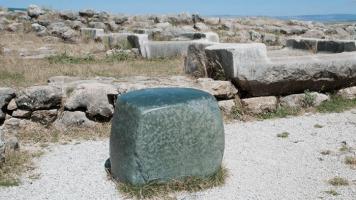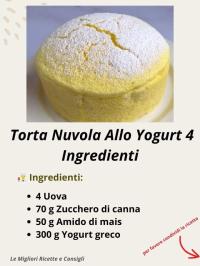Copy Link
Add to Bookmark
Report
HOMEBREW Digest #2223

This file received at Hops.Stanford.EDU 1996/10/09 PDT
Homebrew Digest Thursday, 10 October 1996 Number 2223
FORUM ON BEER, HOMEBREWING, AND RELATED ISSUES
Mike Donald, Digest Janitor-in-training
Thanks to Rob Gardner for making the digest happen!
Contents:
Hops in fermenter... (Robert_Felberg_at_ASTBMOUND4@ccmailsmtp.ast.com)
Info on Computer Temperature Sensors (Bob S)
Dateline NBC story to air Sunday 10/13 ((David C. Harsh))
psyphon ((beerdogs))
Carbonating in cold storage (Edward J. Steinkamp)
Dateline / In Defense of 1056 (Randy Erickson (RANDY ERICKSON))
Copper in beer... (Carl Hattenburg)
re: RO Water and Nutrients (Dave Whitman)
Berliner Weisse (MaltyDog@aol.com)
Re: Ferm Temp (lheavner@tcmail.frco.com)
Belgian Pils (smurman@best.com)
false bottoms/aged Barley Wines (Jim Busch)
Re: White Beer ((Rick Larson))
Re: Pale/Ale Malt,hoppy leaves,bottle time,sherry baby ("David R. Burley")
BC (mikehu@lmc.com)
RE: Pilsener Urquel (John Adams)
1/4 keg mash tun ("David Root")
Syracuse, NY Competition, Nov 23 (fwd) ("Kieran O'Connor")
re: bergamot ((Michael Fay))
Beer Filtering (rbarnes@sdccd.cc.ca.us)
Flying Saucer (John Wilkinson)
Favorite IPA (Brian S Kuhl)
First time All Grain Questions - Is it normal? (BernardCh@aol.com)
re Wyeast 1056 ((Bill Giffin))
Light Skunking (jander)
Rims Questions ("Kelly C. Heflin")
Dateline NBC (Rob Moline)
For SUBMISSIONS to be published, send mail to:
homebrew@aob.org
For (UN)SUBSCRIBE requests, send mail to:
homebrew-digest-request@aob.org
and include ONLY subscribe or unsubscribe in the BODY of the message.
Please note that if subscribed via BEER-L, you must unsubscribe by sending
a one line e-mail to listserv@ua1vm.ua.edu that says: UNSUB BEER-L
If your address is changing, please unsubscribe from the old address and
then subscribe from the new address.
If your account is being deleted, please be courteous and unsubscribe first.
For technical problems send e-mail to the Digest Janitor,
homebrew-digest-owner@aob.org.
OTHER HOMEBREW INFORMATION
http://www.aob.org/aob - The AHA's web site.
http://alpha.rollanet.org - "The Brewery" and the Cat's Meow Archives.
info@aob.org - automated e-mail homebrewing information.
ARCHIVES:
At ftp.stanford.edu in /pub/clubs/homebrew/beer via anonymous ftp. Also
http://alpha.rollanet.org on the web and at majordomo@aob.org by e-mail.
COPYRIGHT:
As with all forums such as this one, copyrights are retained by the
original authors. In accordance with the wishes of the members of the
Homebrew Digest, posts to the HBD may NOT be sold or used as part of a
collection that is sold without the original authors' consent. Copies
may ONLY be made available at no charge and should include the current
posting and subscription addresses for the HBD.
----------------------------------------------------------------------
From: Robert_Felberg_at_ASTBMOUND4@ccmailsmtp.ast.com
Date: Wed, 09 Oct 96 11:17:01 PST
Subject: Hops in fermenter...
Hello All,
Okay, I'm a real rookie here. I'm on my second batch of brew right
now. My first batch turned out much better than I expected. It was
done with hopped extract and corn sugar. The current batch I'm working
on is based on an English Ale recipe in TNCJHB. I used pelletized hops
for this one. After boiling and cooling I started siphoning into my
carboy. I expected to get a lot of gunk from the hops and ran the wort
through a kitchen strainer. There was a much biger mess than I
expected. I was hoping it would clear, but it seemed that the hops
were drawn to the siphon like a magnet. The strainer seemed to work
though so I continued. I shook up the wort real good and pitched the
yeast. Everything seemed hunky dory until the next morning. The
fermentation was going just fine. There was a LOT of activity. But
looking at the bottom of the carboy, I noticed almost a half inch
layer of hops had settled.
My question is concerning these hops. I like IPA's and such but I'm
not a real hophead. Are these hops setting in the bottom of the carboy
going to adversley affect the flavor of the beer? I only have the one
carboy and have considered tranferring the beer to a sanitized bucket
using the common Core-Boy filter idea, cleaning the carboy and putting
the beer back in to continue the fermentation. Is the risk of
infection and/or oxidation too great to justify this as opposed to
just letting the hops sit there for another 7 days. By the way, this
is the third day of fermentaton and it's slowed considerably. I
removed the blowoff tube last night and put on an airlock and activity
is minimal. Haven't checked the current gravity yet. OG was 1.038.
Sorry about the long dissertation, but I wanted to supply as many
details as possible. Oh great wise ones of brew! Can you help?
Rob Felberg / Fort worth, TX
------------------------------
From: Bob S <pittprog@usaor.net>
Date: Wed, 09 Oct 1996 13:54:45 -0400
Subject: Info on Computer Temperature Sensors
Greetings fellow brewers,
I am currently (actually perpetually) in the midst of redesigning some
facets of my nano-brewery and have been banging my browser against
the wall in search of a company that makes some kind of temperature
sensor that could be read via either my PC's serial or parallel port.
TIA,
Bob
Gadgetry IS half the fun!!
- ----->
Bob
<-----
------------------------------
From: dharsh@alpha.che.uc.edu (David C. Harsh)
Date: Wed, 9 Oct 1996 14:36:49 -0400
Subject: Dateline NBC story to air Sunday 10/13
Jeff in Casper, Wyoming asked about the Dateline NBC story:
The ad blurb goes something like "microbrews are really popular these days,
but before you drink them you should see our story" (seriously
paraphrased)
My bet is it will be focused on the fake micros from budmilloors et al.,
but we'll see. The ad gives no details about the story.
It is scheduled to run this Sunday at 7 p.m., assuming it doesn't conflict
with the A.L. Championspit Series. (No affiliation, I'm a fan of the
senior circuit)
Dave
------------------------------
From: beerdogs@cyclops.dcache.net (beerdogs)
Date: Thu, 10 Oct 1996 15:46:16 -0500
Subject: psyphon
i missed the thread, what is a listerman's psyphon starter and how does it
work?
cheers,
Sara&Rod
***blessed is the woman who gives birth to a brewer***
-inscription outside of Pilsner Urquel, Czechoslovokia
------------------------------
From: Edward J. Steinkamp <ejs0742@dop.fse.ca.boeing.com>
Date: Wed, 09 Oct 1996 12:56:46 PDT
Subject: Carbonating in cold storage
In regards to the question of whether a pils can be kegged before
it has fermented out, sure you could do it and it would be as
elegant as a fountain of champagne out of a bottle at a wedding
celebration. IMHO it would be impossible to gage just when to
keg the beer, and the risk of incorrect carbonation is not worth
the limited benefits obtained by not priming.
My fourth Bohemian Pilsener was beautiful in every respect; nice
blond color, crystal clear, nice malty flavor profile balanced
perfectly with Saaz hops, six foot tall dense white head. After
the glass of beer sat on the counter for what seemed like half a
lifetime the head would dissipate to the point I could drink it,
but the beer was still sharply overcarbonated.
The moral is: don't mess with it. You'll put all this time and
energy into the decoction mash, the long lagering, etc... and
you'll end up with a glass of Bohemian foam.
Ed Steinkamp
------------------------------
From: Randy Erickson (RANDY ERICKSON) <RANDYE@mid.org>
Date:
Subject: Dateline / In Defense of 1056
Jeff asks about a promo for Dateline NBC and its tantalizing tone re:
dangers of homebrew. Saw the promo, not the show, but it was
microbrews they were after, not homebrew.
I assumed they were going to say microbrew was dangerous because
they don't brew with healthy, organic rice, corn, or other cereals like
BudMilloors. Or maybe, "Watch out, these guys use the skin of the hops
(tm), not the heart, or some such nonsense. Guess we'll see in a couple
of days.
********************************************************************************
Steve Alexander asks about why Wyeast 1056 is so popular since it is
rather neutral and bland.
I bet KennyEddy could tell you -- it was in his ultimate six-pack survey --
Sierra Nevada Pale Ale. 1056 is purported to be the famous Chico strain
used by SNPA. Not a bad goal for most aspiring homebrewers, IMHO. I
know I'm proud when a batch turns out something close to this.
Randy in Modesto
------------------------------
From: Carl Hattenburg <CHattenburg@Perstorp-us.com>
Date: Wed, 9 Oct 1996 16:44:51 -0400
Subject: Copper in beer...
This quote lifted shamelessly from the Celis Q&A page:
"Why are copper kettles used?
First, the copper kettles are traditional, and Celis Brewery is very
proud of its traditions. Second, the copper gives the beer a more
rounded flavor, and also, copper conducts heat better, thereby giving a
better boil in the brewing process. "
hhmmm....
- - Carlos,
(w) 301.680.7276; (fx) 301.236.0134; (h) 301.942.3756
(e) CHattenburg@Perstorp-us.com (e) CHatten@Erols.com
(www) http://theweeds.smxcorp.com/carlos/carlos.html
------------------------------
From: Dave Whitman <dwhitman@rohmhaas.com>
Date: Wed, 09 Oct 1996 16:39:35 -0700
Subject: re: RO Water and Nutrients
In HBD #2221, Bill Ballhorn <ballhorn@radiks.net> asks about stuck
fermentations when mashing with RO water, wondering if the solution is
to add yeast nutrients or to add minerals.
I think the problem is lack of minerals (specifically calcium ion), not
yeast nutrients. Calcium ion is needed for proper mashing; it helps
stabilize the amylase enzymes. Your good luck on batches where you
"Burtonized" the water supports this idea.
If the mashing is sucessful, the grain should provide all the other
nutrients your yeast needs.
I'd recommend back-adding gypsum or CaCl2 to get your Ca ion
concentration up to about 50 ppm (as CaCO3). If my experience is any
indicator, you'll have to readjust your temperature profile for mashing
since *everything* is going to be different going from essentially zero
Ca to a proper level.
------------------------------
From: MaltyDog@aol.com
Date: Wed, 9 Oct 1996 16:46:52 -0400
Subject: Berliner Weisse
Brian wrote the HBD back on October 1, but I do my E-mailling (and HBD
reading during work hours, so I don't always have time to respond right away!
Anyway, I'm writing about his question regarding Berliner Weisse yeast. I had
a very interesting experience with a batch I made last year. It got 42 points
in the AHA national "Weisse is Nice" contest (though it didn't place-they
must have gotten a lot of good beers!) and won a first price in the regional
New York City Homebrewer's Guild at around the same time. So I have to think
that's it pretty much within the style guidelines.
It was one of the easiest all-grain beers I've every made. I used the
Brewer's Resource Belgian Wheat yeast, but that was not the basis of the
flavor. The way I got the Lactic acid was a very traditional one; I simply
did not boil the wort! I had a long, five hour mash, sparged into my brewpot,
and instead of boiling, immediately chilled the beer down and pitched the
yeast!
It worked very well, except for one thing, which I will remedy the next time
I try this batch; I had very low extraction, I think because of the loss of
heat during my long mash; by the time I sparged, I was at about 130 degrees.
I had to add some extract to get the gravity up into the style range.
Anyway, it was scarey brewing like this (without a boil to kill the germs you
feel like you're flying without a net) but the results were very gratifying;
the beer was very tart, but delicious, and the flavor never went out of
control, as I was afraid it was. I think the high acidity killed off any
possible microbial activity.
Bill Coleman
MaltyDog@aol.com
------------------------------
From: lheavner@tcmail.frco.com
Date: Wed, 9 Oct 1996 11:09:48 -0500
Subject: Re: Ferm Temp
>>> From: David Conger <dconger@hal.hscribe.com>
Date: Tue, 08 Oct 1996 09:38:09 -0400
Subject: Fermentation temperature
{snip}
I think I could force the air temperature to around 60 degrees F with
my fermentation chiller. I'm not sure how much cooler that will make
the wort. <<<
I suspect that the wort should be at the recommended temperature, but
I will defer to the proper authorities. However, the temperature
difference is a heat transfer problem that can be partly alleviated.
A simple fan blowing gently towards your fermenter causing air to flow
past the surface will improve heat transfer and reduce the difference
between the insides and the outsides of your fermenter. Otherwise a
boundary layer of still air forms around the fermenter that acts
almost like an insulator. The old wet "T" shirt trick is even better.
The water evaporating off the surface of the fermenter is actively
removing lots of heat (of vaporization) even without a large
temperature difference to drive the heat transfer. I wouldn't try
these with an open fermenter, though.
Lou Heavner
<lheavner@frmail.frco.com>
------------------------------
From: smurman@best.com
Date: Wed, 09 Oct 1996 14:13:02 -0700
Subject: Belgian Pils
My base malt for my next 3 batches will be DeWolf-Cosyns Belgian pils.
Does anyone have any comments about this malt for a new all-grain
brewer?
SM
------------------------------
From: Jim Busch <busch@eosdev2.gsfc.nasa.gov>
Date: Wed, 9 Oct 1996 15:10:54 -0400 (EDT)
Subject: false bottoms/aged Barley Wines
RE: heating under false bottoms
<Personally, I feel that if
<heating by direct fire, the smaller false bottom would be safer.
<This is not to say that it cannot make good beer, just that you need
<to be more careful with a larger volume of mash liquid under the
<false bottom.
My own feeling on this is why would anyone attempt to heat under a
false bottom unless he is doing some RIMS type recirc? Im quite fond
of my full kettle false bottom but would never attempt to heat the
mash from under this. I like to mash in a kettle and lauter in a
lauter tun.
< I'll bet that not only is this beer smoother,
<softer and less harsh, but it also smells fruitier, right? A good
<Barleywine (in my opinion) will be undrinkably harsh for at least 6
<months.
All depends on how you make the barley wine. I love a good Bigfoot
when fresh and this is only a few months from brewday when released.
Same with Dominions Millennium. If the fermentation is carried out
with a fairly clean yeast at reasonable ale temps then I dont see
the mandatory 6 months aging being required. Sure, the perceptions
will change and some will prefer this (lots of folks like oxidation
reactions in strong beers but I think they turn the caramel malt too
chocolatey). I know lots of folks who agree with the "laying down"
of BWs and in some cases I do too. Just not all.
Jim Busch
------------------------------
From: rick@adc.com (Rick Larson)
Date: Wed, 9 Oct 1996 16:59:26 -0500 (CDT)
Subject: Re: White Beer
John,
>
> Time to brew a white beer. Anyone want to send me their favorite
> all-grain recipe? I am not a huge spice fan (in beer anyway) so I
> would prefer something lite in that area.
45% pilsner malt
25% malted wheat
25% flaked wheat
5% rolled oats
17-19 IBUs, all at the beginning of the boil
1/3 gram/liter of Curacao at knockout
3/4 gram/liter of fresh crushed coriander at knockout
Wyeast Belgian White starter
I've used this for 10 gallon batches, 20 gallon batches,
and my lastest 10 bbls (310 gallons).
Good luck!
rick
- --
Rick Larson rick@adc.com
Minneapolis
------------------------------
From: "David R. Burley" <103164.3202@CompuServe.COM>
Date: 09 Oct 96 18:18:38 EDT
Subject: Re: Pale/Ale Malt,hoppy leaves,bottle time,sherry baby
Brewsters:
Part 1 of 2
I've been very busy lately, so my responses are a little late.
AlK writes:
> I really think that associating "Pale Malt" with lager malt is a recent
> one. Until a week ago (in our beta amylase discussion group), I have never
> heard anyone refer to "Pale Malt" unless they were simply referring to
> all pale malted barley (Pale Ale malt, Lager malt, Pils malt, etc.). I
> suggest we don't need this new association to confuse new homebrewers.
Usually the term Pale malt is reserved for American and Continental malts and
is
distinguished from Pale Ale malt in my experience. Even if you are correct and
someone uses the term Pale Ale Malt as a subset of Pale Malt there still is a
difference between Pale Ale Malt and Pale malt ( which was the point of the
discussion as I recall) in that if you use the wrong kind of Pale malt ( e.g. a
lager or Pilsner malt) in place of a Pale Ale malt you may get a result
different from what you expect, particularly in a single infusion mash
Also:
Dave writes:
>If you use whole leaf hops,
(I guess this is pick on Dave day ;^). "Leaf hops" are a misnomer. You
use the hop flowers for brewing, not the leaves.
Yeah, stop picking on me and go pick some hops leaves and I'll pick the
whole-leaf hops." Whole leaf hops" is a valid term used in the industry for
unchopped/unpelleted, etc. hops.
Actually the hop "flower", as you call it, is made up of bracteoles which are
leaf derivatives,and is not a flower. That's why we both should have said
"cones" to be really clear.
- ------------------------------------------------------------------------
David ( nice name!) C.C. Sprague is worried because his beer worked out
perfectly according to directions and his HB guy is real laid back about when
to
bottle. Hey, man, that's great. Bottle it whenever you want to, but it is safe
to bottle when you get the same gravity reading on two or more days in a row.
Typically about a week after transfer to a secondary. If you are ever worried
about a stuck fermentation ( not in this case) and don't know the anticipated
FG, use Clinitest diabetes test to determine if there are significant amounts
of
reducible sugars.
- -----------------------------------------------------------------------
EDWARD SPADONI writes:
What is the difference between Sherry yeast and wine yeast if any at all?
If you do it all right, the sherry yeast will develop white "flors" on the wine
surface and eventually cover the whole surface while the wine oxidizes in a
controlled manner to form a sherry and not vinegar.
To accentuate this, put a dry air bubbler with a piece of cotton wool stuffed
in
the top to keep the bugs out. It will develop a flor if kept at about 70F for
a year or so.
Otherwise, it should be OK as a wine yeast. Clarify it if it doesn't settle.
- ------------------------------------------------------------------
I received a note from a fellow HBDer contesting my concern in an earlier HBD.
He said that alcohol was flammable and *not* explosive. Please see my response
below and don't flame the mouth of your carboys with ethanol in an attempt to
sterilize them. It doesn't work and is extremely dangerous!!!
My response to this private e-mail:
"I always enjoy your contributions to HBD, Thanks.
Unfortunately, in this case you are dead wrong or could be!
> Catching up on old HBD's and came across your post.
> First, ethanol is flammable not explosive.
Ethanol is flammable AND explosive. Flame front propagation rate is all that
distinguishes the two. When the rate is supersonic - BAM! There are generally
upper and lower limits of air/ solvent mixtures to this propagation rate.
Ethanol is especially dangerous because its flame is invisible in strong light.
The upper and lower explosive limits for ethanol in air at atmospheric pressure
are 3 and 19% acccording to the Chem Rubber Handbook 15 - 45. A carboy is a
perfect place for this to happen.
> Second, flame sterilization does work and is used every day in labs.
Flame sterilization does work if the object is small, like a piece of platinum
wire or such and is conductive. It also works because conventional
sterilization uses the flame *tip* which is MUCH hotter than the flame bottom.
Have you ever been to a circus and watched a performer actually breathe out a
flammable substance and have it burn without burning him? Same principle here.
Surface temperature of the glass surface wet with ethanol and set alight is
low,
even though flame TIP temperature may be high. For things like glassware and
other large non-conductive objects, steam, particularly under pressure to raise
the temperature, is used for sterilization.
> If your beaker of ethanol should catch fire, which happens to new techs
> and students on occasion, it is easily smothered with a lid.
Yeah, I agree. Just don't do it in a necked container.
I suggest you read up on explosions and definitely have a look at the Chem
Rubber Handbook section."
To sterilize the neck of my secondary carboy before I transfer the yeast slurry
to a bottle, I wipe the surface with a cloth dampened with metabisulfite
solution acidified with tartaric acid and wait until the SO2 smell dissipates.
- ----------------------------------------------------------------------
Keep on brewin'
Dave Burley
Kinnelon, NJ 07405
103164.3203@compuserve.com
------------------------------
From: mikehu@lmc.com
Date: Wed, 9 Oct 96 15:30:03 PDT
Subject: BC
Jeff Asks about The Dateline NBC program -
>My brother called me this morning and told me that last night he saw an
>advertisement for Dateline NBC (the news program). One of the taglines was
>something to the effect "Before you drink home brew, you had better watch
>Dateline" ... Has anyone else seen this ad?
I saw the advertisement for it. The program airs this Sunday. I recall that
the subject matter was concerning the micro-brew industry, not homebrewing.
Something to the effect that "before you have your next micro-brew, you need
to watch this Sunday..." Probably sponsered by bud-swill-oors.
Mike H.
Portland, OR
------------------------------
From: John Adams <j_adams@hpfcla.fc.hp.com>
Date: Wed, 09 Oct 1996 16:54:06 -0600
Subject: RE: Pilsener Urquel
I have heard and CANNOT confirm that Pint's Pub in Downtown Denver has
Pilsenser Urquel on tap.
Having for the first time tried it fresh, on-tap in Germany--close to
the source (see my trip report from a few HBD's ago), I will NEVER drink
it from a bottle again. It's is definately not the same beer!!
Prost!
- --
John Adams
------------------------------
From: "David Root" <droot@concentric.net>
Date: Wed, 9 Oct 1996 18:45:57 -0400
Subject: 1/4 keg mash tun
Dave Riedel asked about 1/4 and 1/2 kegs for mash tun.
I use a 1/4 keg for a mash tun and get the same extraction rate for a 5
gallon
batch as a 10 gallon batch. I have a manifold made from 3/8 copper tubing
with 5/64 holes drilled in it. However I have a question. Most books
recomend to
sparge with about the same amount of water as the mash uses. I sparge
with about
10 gallons of 5.3 ph treated water and stop when I have 12 gallons of wort.
This is
at about 1.010 sg. Should I sparge with 5 gallons of water ( when using
20 lbs grain
and 1 qt/lb) and add water to the boil?
BTW I can get about 25 lbs of grain in the 1/4 keg
Thanks for all the information. I was making good beer, then I started
reading
the Digest and now I am making Great Beer!
David Root Droot@concentric.net Lockport NY "I brew therefore I am"
------------------------------
From: "Kieran O'Connor" <koconnor@syr.edu>
Date: Wed, 9 Oct 1996 11:28:38 -0400 (EDT)
Subject: Syracuse, NY Competition, Nov 23 (fwd)
Hi all
I'd like to announce the Salt City Brew Club's 11th annual competition.
The deadline for entries is Nov 8, competition is Nov 23.
We are accepting all styles of beer, mead and cider. Also please note the
following additional styles (or modifications)
1) Oatmeal stout is a style
2) Classic American Pilsner is a style
2) Robust and Brown porter and two separate styles
** Further, we will accept any color, type or size of bottle. We will also
accept carbonators (they will be returned). **Only two bottles per entry**
Jugding sheets are available the day of the competition if you pick them
up, or you will receive them in one week.
Note: Best of show prize is a $200 gift certificate for a homebrew shop
(who will mail order).
Last year we had 270 entries, we should top 300 this year. We hope you'll
enter. If you'd like a packet, email me your snail address with the
subject line "Packet Request" and I'll send one your way.
FInally, we are looking for judges: Syracuse is in the heart of NY State.
260 miles from NYC, 150 miles from Buffalo or Albany. Please contact me if
you are interested in judging. Beds for judges available.
Questions: email me, or call (315) 449-2844, eves.
Kieran
~~~~~~~~~~~~~~~~~~~~~~~~~~~~~~~~~~~~~~~~~~~~~~~~~~~~~~~~~~~~~~~~~~~~~~~~~~~~~~
Kieran O'Connor
koconnor@syr.edu
Syracuse, N.Y. USA
In vino veritas; in cervesio felicitas.
~~~~~~~~~~~~~~~~~~~~~~~~~~~~~~~~~~~~~~~~~~~~~~~~~~~~~~~~~~~~~~~~~~~~~~~~~~~~~~
------------------------------
From: faymi@earlham.edu (Michael Fay)
Date: Wed, 9 Oct 1996 18:23:14 -0500
Subject: re: bergamot
In reference to Mr. Goodale's question about bergamot and Kelly Jones'
response. I believe that the herb with the pink flowers is NOT what is
used in the tea. The herb was named bergamot because it smells like that
real bergamot (I can't say i'd really agree but whatever.) The bergamot
used in Earl Grey tea is from the peel of a little citrus fruit.
I have no idea where you'd get it or its origins, but I'd definitely agree
with not using aromatherapy stuff. As for what style to flavor with it,
you might try making a wit with bergamot instead of curacao orange peel,
the flavor would stand out nicely.
Michael
------------------------------
From: rbarnes@sdccd.cc.ca.us
Date: Wed, 09 Oct 96 16:45:31 pst
Subject: Beer Filtering
To minimize chill haze, yeast sediment and dry-hopping residue I'm
considering filtering my beer. Procedure would be to transfer under
pressure between 2 corny kegs with a filter in between. I have
available a water filter with a tall, clear canister, NPT in and
out fittings, and can purchase a variety of filter cartridges.
My questions: 1) Will this work? It looks like a filter commercially
available ("The Filtration Kit", pg. 52 latest Zymurgy) and I'm pretty
sure that I can buy a .5 micron filter cartridge (like the one in the
ad). 2) How would I clean the filter after use? Also, should it be
stored wet or dry (full of liquid or empty)? 3) If I choose to
naturally carbonate (keg beer before it's finished fermenting to
carbonate, not sure I'm using the right term) can I still filter
the carbonated beer? 4) Any advice on transfer pressure, etc.
Any and all advice welcome.
Thanks- Randy in San Diego
------------------------------
From: John Wilkinson <jwilkins@imtn.tpd.dsccc.com>
Date: Wed, 9 Oct 1996 19:15:47 -0500
Subject: Flying Saucer
In an earlier post I referred to the Flying Saucer bar in Dallas which
has Pilsner Urquell and a number of other beers on tap. Actually, th Flying
Saucer is in Addison, a suburb just north of Dallas. I thought I should
clarify that in case anyone wants to look for it in Dallas. There is another
one in Ft. Worth which is supposed to have a lot of beer also but I have not
been there yet.
I hope I didn't get anyone lost.
John Wilkinson - Grapevine, Texas - jwilkins.imtn.dsccc.com
------------------------------
From: Brian S Kuhl <Brian_S_Kuhl@ccm.fm.intel.com>
Date: Wed, 09 Oct 96 17:28:00 PDT
Subject: Favorite IPA
Brewers,
With the recent thread of a "great world class mega six pack", I got to
thinking of what my six pack would be. I think they would all be IPA's.
Not that I know of any that DEFINE the style. I just like bold (malt
profile), hi-alcohol and hoppy brews. Does anyone know of any craft and
mega brews that are excellent and/or that define the style IPA?
CU
Brian
------------------------------
From: BernardCh@aol.com
Date: Wed, 9 Oct 1996 20:44:32 -0400
Subject: First time All Grain Questions - Is it normal?
Advice and assistance from the collective would be greatly appreciated.
Attempted to brew my first all-grain last weekend. Grain bill included 8.5#
Klages 2-row, 1.0# Light Munich Malt, 0.5# Cara-Pils. Crushed all in a Phil
Mill (TM) with what I thought looked like a fairly decent crush. Mash tun is
an Igloo 10 gallon insulated round picnic cooler. Mashed in with 2.3
Gallons H2O at 137F to achieve 120-122F rest for 15 minutes. Added 1.8
gallons of boiling water to raise to conversion temp of 154-155F, Let rest
for 60 minutes. Iodine test showed conversion. Transfered what seemed to be
a rather "loose" mash to a Phils Lauter Tun (TM) setup. Let sit for 10
minutes to establish bed. Heated sparge H2O up to 168F. Began draining and
recirculating until clear (maybe 1.5 - 2 quarts). Began sparge operation,
keeping water above level of grains. Sparged to 6.5 gallons of wort. Sparge
time took about 30-45 minutes.
During boil (75minutes) I noticed a lot of "particulate matter" floating
around in the wort. It wasn't hop material (plugs in muslin bags) I didn't
think it looked like husk material, but was white-ish in color and about the
1/4 - 1/8 the length of a grain of rice.
Question 1: Do the rest of the all-grainers get this in their boil?
Question 2: What is this and if the answer to Q1 is no, how do I get rid of
it.
Fast forward to Wednesday. Drew a sample. Lots of "particulate matter" in
suspension in the sample; similar to what was in the boil. Tasting the
sample it was obvious that there were beer flavors starting to appear, but
there was an overpowering flavor of WET GRAIN.
Question 3: Should I see "stuff" in my beer after 3-4 days?
Question 4: It doesn't look like to cold break material from my extract
brews. What is it?
Question 5: Will it settle out?
Question 6: Should I just "Relax, don't worry. . .?
General question: From the above description, was my proceedure close to
"correct?"
Thanks in advance for any assitance and advice.
Chuck (BernardCh@aol.com)
Nashville, TN
Music City, USA
------------------------------
From: bill-giffin@juno.com (Bill Giffin)
Date: Wed, 9 Oct 1996 18:03:57 cst
Subject: re Wyeast 1056
Good evening,
>>>Steve Alexander asks
The descriptive terms for this yeast are soft, smooth, clean, neutral.
So why is a soft, bland and nearly flavorless yeast also apparently
the most popular HB yeast for hoppy ales when alternative yeasts with
wonderful character like Wy1028, Wy1098, Wy1968 and others are equally
available ?
<<<
I find the yeast pleasant when you are brewing beers such as a cream ale
or an American wheat, and you want just the hint of malt and hops to come
through and you don't want a strong yeast profile to mask the subtle
flavors. With a very hoppy beer the clean profile of 1056 allows the
hop flavor to dominate and be right in your face again with out the
benefit of excessive fruitiness or esters to dull the hop character.
I have a tendency to become tired of beers that have too much fruitiness
and/or esters even though these beers are great beers. Clean, crisp
beers such as can be made with 1056 are more drinkable. Just my opinion.
Bill
------------------------------
From: jander <jander@wasatch.com>
Date: Wed, 9 Oct 1996 18:50:26 -0600 (MDT)
Subject: Light Skunking
I just went into a new store today to check out their (pretty good, for
Utah anyway) selection of beers. I also issued my standard plea to keep
green bottles away from direct sunlight and/or florescent light. To my
surprise, the manager informed me that BOTH the windows and the
florescent lights were "treated" at considerable expense to eliminate the
harmful spectrums (spectra???).
Okay, folks, did he lay a fast one on me, or is there any truth to this?
I've never heard of any such thing!
- Jim
------------------------------
From: "Kelly C. Heflin" <kheflin@monmouth.com>
Date: Wed, 09 Oct 1996 20:54:14 -0700
Subject: Rims Questions
Finally getting my pump for this weekend. Gonna try my first
recirculating mash. I'll be doing it on a regular gas stove, and with a
little help from some of you I wont screw up.
1. Once I reach my 152 degrees, I'm guessing I will leave a small flame
on the stove to keep it there.
2. I've seen some things written that say you shouldnt disturb the grain
bed, and others that say I should constanly be stirring the mash. Whats
the conscensus. I've allways stirred about every 5 or 10 minutes. Why
would it be important to have clear runoff while mashing, as long as you
let it settle before you sparge.
3. I imagine that recirculating the entire time, the mash water is
loaded with sugars, so when you sparge you will reach a low specific
gravity rather quickly. I've heard of negative things happening with
sparging low gravity grain, never worried about it before, Anybody else
ever think about this.
4. How bout those Yankees!
5.I allways take a guess on the consistency of my mashes. I want to get
away from that. Whats the final word on water to lbs of grain.
Thanks for any help.
kelly
- --
Kelly C. Heflin
Kheflin@monmouth.com
------------------------------
From: Rob Moline <brewer@kansas.net>
Date: Wed, 9 Oct 1996 19:21:28 -0500
Subject: Dateline NBC
The Dateline NBC story on micro's and Brewpubs will air October 13.
All i have heard is that amongst other things, you will see Sam Adams take a
hit from Anheuser Busch for "mis-leading" the consumer, with the multiple
contract brewing deals. Failing to disclose the 'brewed by XYZ Brewery Under
License' type of wording. This is only related to me on a good tip from one
of the NBC personnel (quite highly placed,) to a mutual acquaintance, and as
such constitutes 'hear-say.' I have no public opinion on these matters,
BTW, as of Sept. 23, '96, there were 637 brewpubs operating in the
US, 196 opened in '95. Average BP generates 1.75 M$ annual revenue. BP's
are opening at a rate of 6 new ones per week currently. We are here to stay.
NBC or no NBC. (This is assuming, from the tone of the reported ad blurb for
the show, that there is a negative spin put on the story.) The US consumer
has, and will continue to gain sophistication in beer, and will continue to
vote with their wallets.
Data- Institute For Brewing Studies.
Jethro
Cheers!
Rob Moline
Little Apple Brewing Company
Manhattan, Kansas
"The more I know about beer, the more I realize I need to know more about
beer!"
------------------------------
End of Homebrew Digest #2223
****************************























